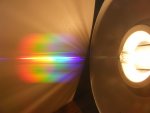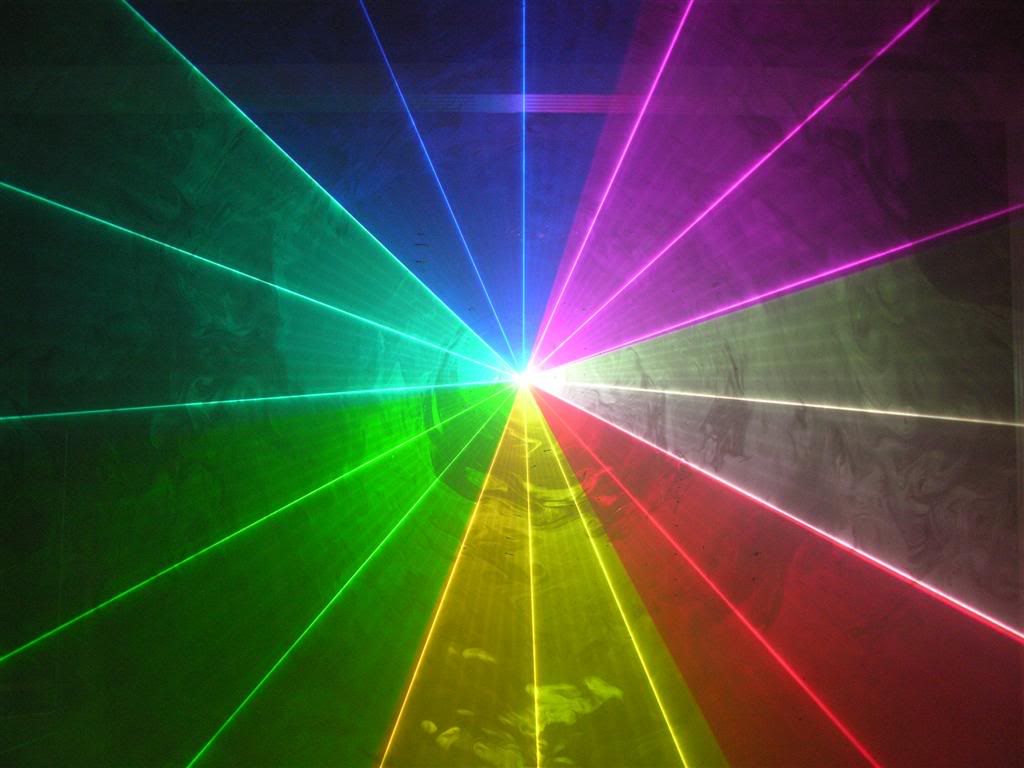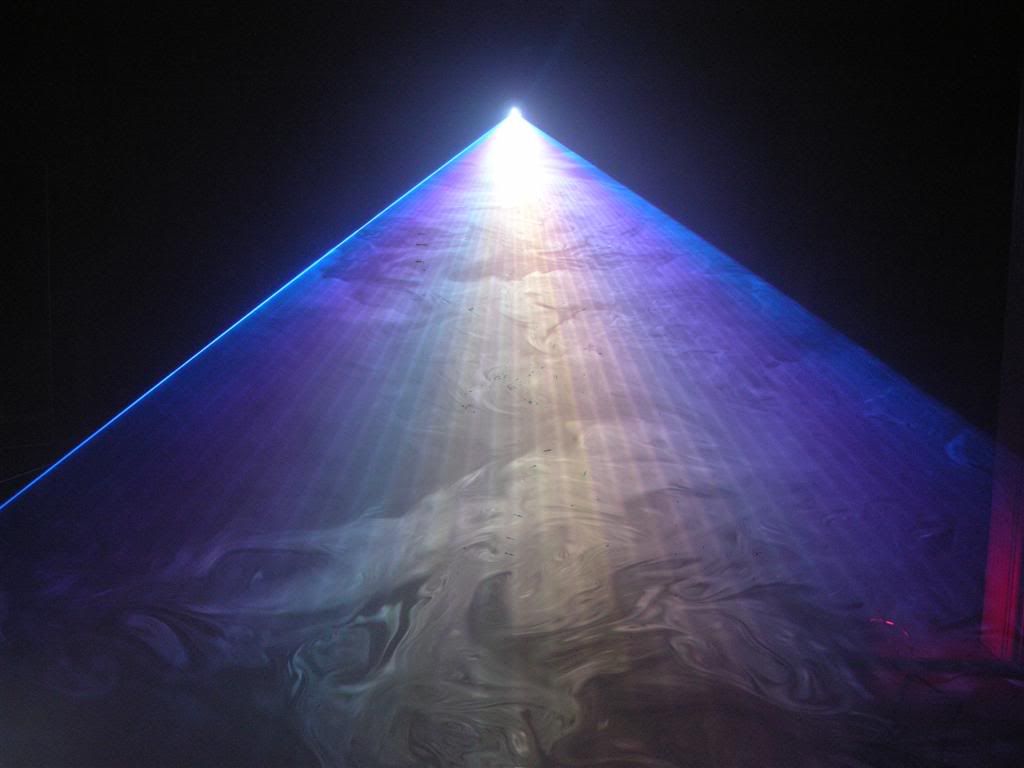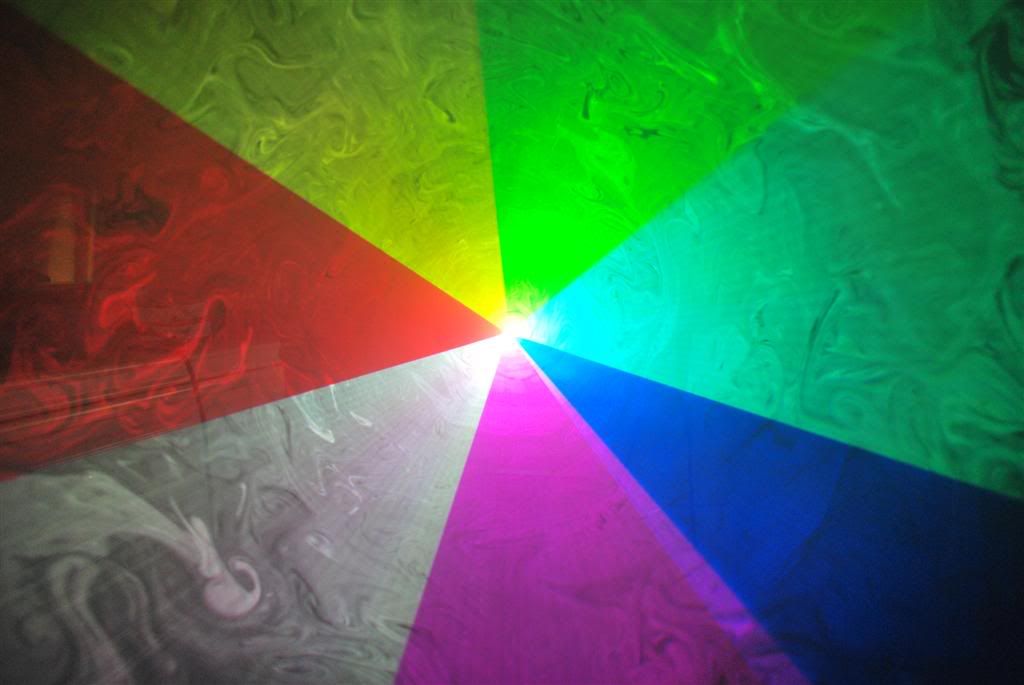having built a white system with 13 lines, using a modulator that can modulate any 8 of them, I can tell you for sure that brown, metallic gold, metallic silver, orange, and TWO LINE white are very possible with 2, 3, and 4 lines.
Older laser show systems used to be 4 scan heads with 488, 514, 568 or 575, and 647, and as each scan head was modulated with a sine, triangle, or squae wave, you could see some really fantastic colors that otherwise did not exist as the images overlapped. Some of these colors were due to pulse response times in the eye as well.
Superbright LED signs are getting to the point that you can see some of the wierd stuff with them, but they really would need a 4th led color to do the full spectrum a laser source can..
I've seen white with just 568 or 575 yellow and 488 blue, deep blue from green and violet and , and a two line white with 476 and 647, a host of other colors that the eyes uneven response curves create, many that you do not see in nature and will never see on a TV or film..
BTW, 488 blue, 568 yellow, and 530 green make a color that shifts from blue to bright white to orange as you change the proportions, even with no red, you can slide the effective color temperature from red orange to white to a hotter then 6200 K white..
Tocket's Chroma Program covers a lot of this and lets you test various combinations..
Steve
Older laser show systems used to be 4 scan heads with 488, 514, 568 or 575, and 647, and as each scan head was modulated with a sine, triangle, or squae wave, you could see some really fantastic colors that otherwise did not exist as the images overlapped. Some of these colors were due to pulse response times in the eye as well.
Superbright LED signs are getting to the point that you can see some of the wierd stuff with them, but they really would need a 4th led color to do the full spectrum a laser source can..
I've seen white with just 568 or 575 yellow and 488 blue, deep blue from green and violet and , and a two line white with 476 and 647, a host of other colors that the eyes uneven response curves create, many that you do not see in nature and will never see on a TV or film..
BTW, 488 blue, 568 yellow, and 530 green make a color that shifts from blue to bright white to orange as you change the proportions, even with no red, you can slide the effective color temperature from red orange to white to a hotter then 6200 K white..
Tocket's Chroma Program covers a lot of this and lets you test various combinations..
Steve










